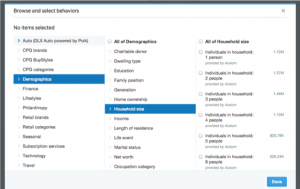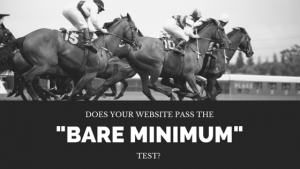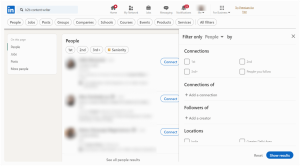The way people search the web has seen a shift with more age groups using visual search when looking to purchase online. With the major search engine and social media platforms launching visual search tools such as Google Lens, Pintrest visual search tool, Bing visual search tools, there is an upward trend on people’s visual search preferences. A report by Emarketer in August 2018 shows that visual search was the preferred technology among UK and USA age groups 18-34 and that number is expected to grow even further.
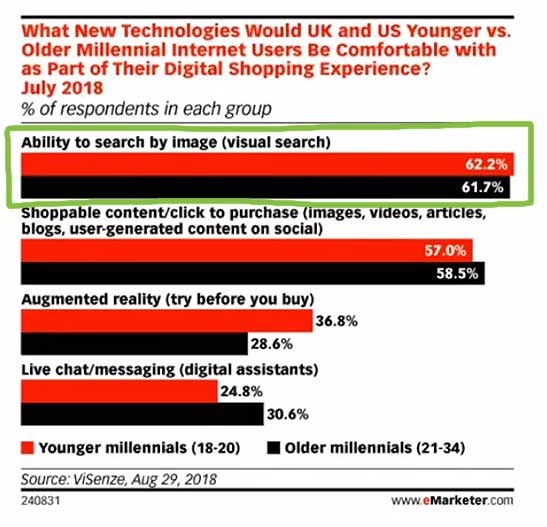
Emarketer Visual Search Report
This brings up a very important topic which is: Are local businesses especially those who rely on images to capture customer’s attention such as restaurants, fashion, photography, retail, giving the required importance to properly optimizing images they post on their website, e-commerce site and social media profiles?
Image SEO has been overlooked in the last 5 years. Treating images within your content with the ‘Is just an image’ attitude, especially in times when the online search activity and particularly online shopping has seen a significant increase would mean missing out huge on opportunities to be discovered online. Think about how image search can help people who:
- Make purchasing decisions based on images they see online,
- Know what they really want but can’t remember the name
- Due to language barriers prefer visual communication
Why should local businesses optimize for visual search?
Optimizing for visual search should become part of your SEO strategy and the sooner a business thinks seriously about it, better the chances of gaining a competitive advantage. Looking at the report published by SparkToro, which shows that Image search represented 21.51% of the search market share for the first quarter of 2019, this makes a convincing enough case for SEOs to no longer ignore the importance of image optimization.
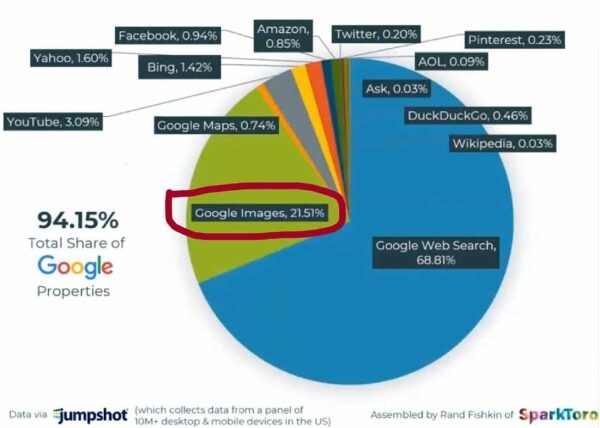
Google Image Search Share-SparkToro
How can a local brand benefit from visual search?
- Google Lens as well as Bing visual search or Pintrest offer huge opportunities for ranking on mobile and desktop SERPs. Google was acknowledged the patent to help return image queries from searches involving identifying objects in photographs and videos in February. See the post Bill Slawski wrote about this in his blog
- Image carrousels on mobile devices can increase conversions minimizing the number of clicks from search results to the shopping cart. More on how this and using structured data for rich results can be found on Google’s documentation
- Product schema markup when implemented properly, greatly helps your product images appear in organic search results especially on mobile devices. As of 2018 Google started showing product labels in image search in mobile as well as organic rich results on web search. This feature applies only to product related images in the Google Merchant Center
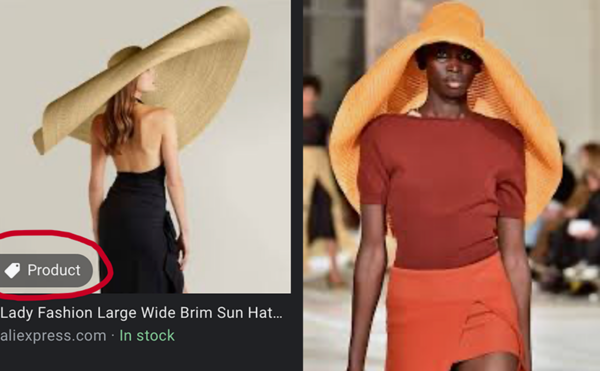
Google Showing product labels in rich results
- Leverage the power of rich English language. Considering that the English language has over 170,000 words and the regular person uses from 20,000-40,000 words, there is an enormous opportunity for e-commerce sites to optimize for visual search based on user intent.
- GeoTaging images can help with rankings. This is especially important for local websites. You can add location manually with geoimgr.com
- Use high quality photos for your images, preferably 1200px wide. Avoid using filters. Here is a short article listing some of the most popular image optimization tools which compress images, without any perceivable loss in quality
- Create an image rich Google My Business profile to get found when users search locally for a business. Using structured data for local business increases your chances of being discovered when customers search using a specific query or a business type.
To conclude, the rise in popularity of visual search demands that local brands focus more on image optimization and make visual search part of their SEO strategy.
Digital & Social Articles on Business 2 Community
(37)


